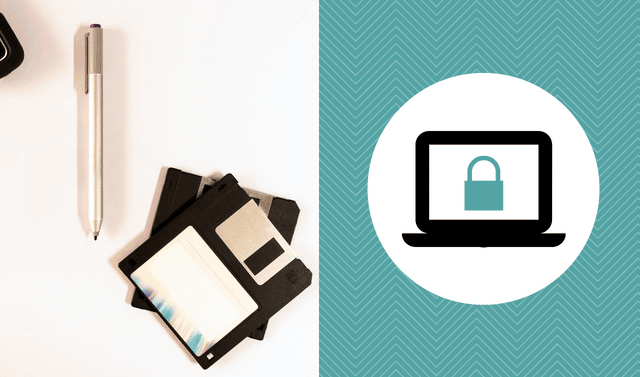Sign up for the Family Tree Newsletter Plus, you’ll receive our 10 Essential Genealogy Research Forms PDF as a special thank you!
Get Your Free Genealogy Forms
"*" indicates required fields
Ask the Archivist: Saving Family Diaries
Got precious family diaries? Heed these tips on taking care of your ancestors’ most trusted confidants from M. Scott Simkins, head conservator at the Family History Library.
Q. What’s so special about family diaries?
A. When you’re immersed in them, it’s easy to envision who your relatives were and to feel your heritage. After you read for a while, you find there are certain ways they phrase things. The handwriting, the papers and the little things they may tuck in are really cool to see and act as a sort of time machine.
Q. How should you handle diaries?
A. Wash and dry your hands right before you handle them, and every so often during handling. (I prefer regular dish liquids that “take the grease out” and are not too aggressive.) Handle pages tenderly because they can become quite brittle. Don’t lick your fingers before turning a page, as it will attract dirt to that spot. If the way a book is bound puts too much pressure on the pages as you turn them, you may want to carefully remove the pages, make a facsimile, and consider rebinding the book.
Q. Break the binding or take it apart? Really?
A. First ask yourself about your intent of use. Do you prefer not to disturb the bound book, or take a chance on breaking the binding to get at the contents? For us, it’s usually more about what’s inside. With a lot of bindings, you can cut through the end sheets and “super” material (without cutting the spine) and pull the text block out, leaving the cover relatively undisturbed. Then you undo the sewing or steam the glue to loosen, and take it apart. Sometimes there’s sufficient binding edge margin so you can cut the bound edge straight off.
Q. If you don’t want to take it apart, what can you do to help preserve a diary?
A. Remove damaging items, like paper clips and dust. Then do what the ancient Egyptians did: Store items in a box within a box within a box. You create a microenvironment that protects your items from fluctuations in temperature, light, fumes, pests, dust and weird smells or anything else that may increase deterioration. Wrap the book in acid-free tissue, place it within multiple boxes that fit nice and snug, and put it in a closet in your everyday living space (not an attic, garage or basement). Share the original cautiously or not at all; make copies and share those instead.
Q. What if pages are stuck together?
A. See if you can determine why. Introduce a little moisture and test a safe area to see if it will release, being careful not to over-humidify. Some adhesive removers might get the pages apart, but then you may have an oil stain, as many removers are oil-based. You may be able to get away with a 50/50 mixture of water and isopropyl alcohol, but that may cause ink to spread. Sometimes you can warm it up with a hair dryer to reactivate and release any tape or adhesive. You can use baby powder to remove tackiness left behind on the surface–we use cellulose powder. Every item requires its own approach, and you’ll have to make sure it doesn’t cause other problems. That’s why we always recommend hiring a conservator. (Find one at the American Institute for Conservation of Historic and Artistic Works.) All the processes we try are reversible, so we can back up and go another direction if it’s not working.
Q. Should you scan or copy the pages or create a transcription?
A. Both. Capture the item digitally so you can make more copies and share them easily. Technology changes so fast.Copy photos to external hard drives, flash drives, blogs, email attachments–just get it out there. Make a transcription, too, because people are comfortable with printed pages and can immediately read and enjoy them. (See the advice below on creating accurate transcriptions.) But typescripts are easy to lose and misplace. Remember the acronym LOCKSS: Lots of Copies Keeps Stuff Safe.
Q. What if parts of a relative’s diary are too personal to share?
A. This is obviously an ethical and personal decision. Where do the rights of the one sharing and the rights of the one receiving start and end? I would approach each situation independently with an open heart and mind. As a dad myself, I can see where there might be family information I would be hesitant about sharing. As a conservator, I say don’t black out [pages] or remove anything. Perhaps one solution is to make facsimiles with added inserts saying there’s information removed from the original due to confidentiality, and store the original safely.
Q. What kind of documentation should you create about your artifacts?
A. Describe the item. Write about when and where it was found, and its condition. Note any interesting things about where it was found: near a heater, open window, etc. Take pictures of the item “as is” for insurance purposes, or perhaps to protect you from family members who may be upset about its condition. (Download Family Tree Magazine‘s heirloom inventory and description forms.)
Archival Action: Transcribe a Diary
- Wash and dry your hands. Open the diary gently; secure open pages with soft-sided paperweights as needed. Don’t force a book to lay flat if it’s stiff. Touch pages as little as possible.
- Familiarize yourself with author’s handwriting and writing style. Learn more about deciphering handwriting of old in the January 2009 Family Tree Magazine.
- Type a description of the diary, its condition and author. Include your name, relationship to the author, transcription date and the location of original.
- Starting with cover page, type everything exactly as it appears. That includes replicating punctuation, abbreviations, misspelled words, capitalization and superscripts (smaller letters written above the line, as in Wm). Save your work as a Word document (DOC) or a plain-text document (TXT).
- Add your limited commentary in brackets within the text in situations such as the following:
- to identify someone: Wm J. [William Jackson]
- to describe the page layout: [page break]
- to note visual details: [penmanship change]
- to say what’s left out and why: [three paragraphs withheld; confidential material] or [photo removed; stored in Miller archive]
- to indicate unclear words or passages: [illustrious?] or [page illegible]
From the November 2011 issue of Family Tree Magazine
More great genealogy resources from Family Tree Magazine:
ADVERTISEMENT




